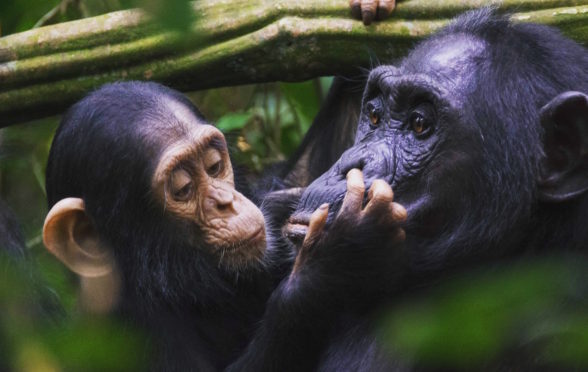There was no monkey business for St Andrews scientists who have found young children ape the gestures of chimpanzees and gorillas.
In a surprise to boffins, youngsters on the cusp of learning language were found to use many signals observed in great apes.
Published in Animal Cognition, the new research showed children use 52 actions to communicate. More than 95% of them are shared with chimpanzees and gorillas.
Scientists from St Andrews University joined forces with colleagues from the universities of Neuchatel, Göttingen and Hamburg in the study.
Chimpanzees were observed in their habitat, the Budongo forest in Uganda, and young children were observed in their nursery and home environments.
Wild great apes use more than 80 different gestures, and the scientists have recently completed a great ape dictionary to investigate what they mean.
Senior author Dr Catherine Hobaiter, from the school of psychology and neuroscience at St Andrews, said: “Wild chimpanzees, gorillas, bonobos and orang-utans all use gestures to communicate their day to day requests, but until now there was always one ape missing from the picture – us.
“We used exactly the same approach to study young chimpanzees and children, which makes sense – children are just tiny apes.”
The scientists were surprised by just how many gestures the children had in common with our ape cousins.
Dr Hobaiter said: “We thought that we might find a few of these gestures – reaching out your palm to ask for something or sticking your hand up in the air – but we were amazed to see so many of the ape gestures used by the children.”
The scientists found that, like young apes, the young children used these gestures in a similar way, combining them together to ask for different things.
They also found some differences with young children use pointing gestures far more than young apes.
Meanwhile waving hands to say hello or goodbye seems to be uniquely human.
First author Dr Verena Kersken, from the University of Göttingen, added:
“Since chimpanzees and humans shared a common ancestor around five to six million years ago, we wanted to know whether our evolutionary history of communication is also reflected in human development.”
She added while humans developed language, it appears that we still have access to this shared ancient gestural heritage.









